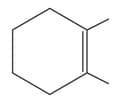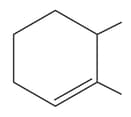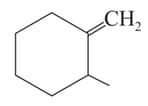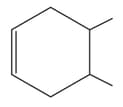Embibe Experts Solutions for Chapter: Organic Chemistry - Some Basic Principles and Techniques, Exercise 1: AP EAPCET - 3 Sep 2021 Afternoon
Embibe Experts Chemistry Solutions for Exercise - Embibe Experts Solutions for Chapter: Organic Chemistry - Some Basic Principles and Techniques, Exercise 1: AP EAPCET - 3 Sep 2021 Afternoon
Attempt the practice questions on Chapter 12: Organic Chemistry - Some Basic Principles and Techniques, Exercise 1: AP EAPCET - 3 Sep 2021 Afternoon with hints and solutions to strengthen your understanding. EMBIBE CHAPTER WISE PREVIOUS YEAR PAPERS FOR CHEMISTRY solutions are prepared by Experienced Embibe Experts.
Questions from Embibe Experts Solutions for Chapter: Organic Chemistry - Some Basic Principles and Techniques, Exercise 1: AP EAPCET - 3 Sep 2021 Afternoon with Hints & Solutions
The total number of possible four membered ring cis and trans isomers for the molecular formula is ________
The order of stability among the following alkenes is:
i 
ii 
iii 
iv 
Which among the following is most acidic?
Assertion (A): Tertiary carbocations are more reactive than secondary and primary carbocations.
Reason (R): Hyper conjugation, as well as inductive effect due to additional alkyl groups stabilise tertiary carbocations.
In sodium fusion test for organic compounds, the nitrogen in it is converted in to
The blood red color of sulfur containing organic compound of Lassaigne's extract is due to the formation of ________
(i) Kjeldahl's method is used in the estimation of element?
(ii) Which of the following compound can be estimated using this method?
During estimation of present in an orgonic compound by Kjeldahl's method, the ammonia evolved from of the compound in Kjeldahl 's estimation of neutralized of The of in the compound is
